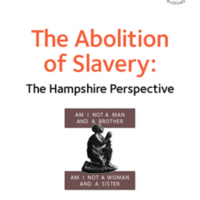
The Abolition of Slavery: The Hampshire Perspective
A touring exhibition exploring Hampshire's links with slave ownership and the abolition campaign was produced by (and featured material from) Hampshire Museums and Archives Service and Hampshire Record Office. The exhibition was on show in the Record Office foyer, before travelling to museums, schools and community centres around the county. The exhibition revealed that there were slave owners living in places in Hampshire such as the village of Hurstbourne Tarrant, and told the story of a slave-trading voyage in 1700 led and financed by men from the Titchfield area. Black servants, very likely former slaves, could be found in unlikely places such as Martyr Worthy and Bramdean. The abolition campaign was fought in the columns of the Hampshire Chronicle and the Hampshire Telegraph, and communities as diverse as Portsmouth, Whitchurch and Fordingbridge sent in petitions to Parliament on the subject. The exhibition also mentioned white slaves taken from the English coast by Barbary pirates, and the testimony of a group of emancipated slaves from Cuba who arrived in Southampton in 1855 on their way to Lucomi in Africa.
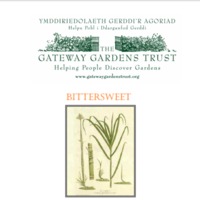
Bittersweet: Sugar, Spice, Tea and Slavery
The Bittersweet programme by the Gateway Gardens Trust involved 80 free guided garden visits over two years, around more than 30 gardens in Wales with a range of community groups, schoolchildren and lifelong learners. The themes of the visits and a mobile exhibition were the links between the slave trade and historic gardens, their makers, what they planted, Welsh abolitionists and the wider links with local communities in Wales. Historic gardens provided the starting point, looking at how everyday vegetables and fruits - beans, potatoes, tomatoes etc. - first reached the UK from the Americas. The project also looked at the history of afternoon tea, and the links between sugar, cotton and tea and slavery. The groups reflected on how many industries, grand houses and gardens were built from wealth linked to slavery, such as Cyfarthfa Ironworks in Merthyr and the expansion of the slate industry at Penrhyn Quarry. Early 18th century-style newspapers were produced, aimed at schoolchildren and adults.
Gardens involved included Cardiff’s Bute Park, Swansea’s Singleton Park, the National Botanic Garden in Carmarthen, Gwydir Castle in Llanrwst, Dyffryn Gardens, Portmeirion, Penrhyn Castle, Picton Castle, Dinefwr Park and Castle and Aberglasney Gardens.
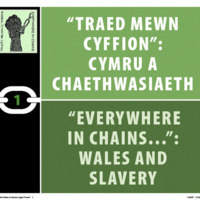
Everywhere in Chains: Wales and Slavery
Everywhere in Chains was an umbrella project created for the bicentenary commemorations in 2007, by a collaboration between Amgueddfa Cymru - National Museum Wales, the National Library of Wales, University of Wales, Bangor and CyMAL: Museum Archives and Libraries Wales (part of the Welsh Assembly Government). An exhibition explored Welsh involvement in slavery, especially focusing on the transatlantic slave trade and its abolition, the Black presence in Wales, and legacies of slavery. This was shown at the National Waterfront Museum in Swansea from May to November 2007 before touring to Wrexham County Borough Museum. The touring version of the exhibition was funded by the Welsh Assembly Government. The exhibition in Wrexham included discussion of the painting 'A Negro Coachboy', thought to commemorate a black servant of John Meller, owner of the Erddig estate in the 18th century.
Alongside the exhibition, the Everywhere in Chains programme also included lectures, formal learning activities and performances. An educational pack was produced by CyMAL and distributed to every school in Wales in 2009-2010. A community project created a forum in which participants from many cultural backgrounds could voice their ideas about enslavement. The Everywhere in Chains Community Heritage Toolkit captured the learning from this project. The toolkit, launched in 2009, was produced to help individuals, groups and organisations to work with culture and heritage providers to undertake projects focused on the role of Wales in the transatlantic slave trade and issues of modern slavery.
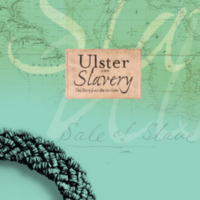
Hidden Connections: Ulster and Slavery 1807-2007
The Hidden Connections exhibition was a result of partnership between the Public Record Office of Northern Ireland (PRONI) and the Linen Hall Library in Belfast. The exhibition explored Ulster's links with slavery after 1807 via people, events and places, and looked at both the pro and anti-slavery debates in Northern Ireland. It drew on documents from PRONI’s archives, artefacts from the Ulster Museum and contemporary books and pamphlets from the Linen Hall Library and elsewhere. After its launch at Linen Hall Library, the exhibition toured Northern Ireland, travelling to Down Museum, the Harbour Museum in Derry, Lisburn City Library and the Ulster American Folk Park.
The wider Hidden Connections programme featured workshops exploring archival sources, performances and lectures by leading scholars. There was a panel discussion on ‘Slavery Now’, a walking tour of Belfast sites associated with the slavery issue, and a boat trip on the Lagan focusing on the port’s links with slave colonies. Gerry McLaughlin’s ‘Blood sugar’ is a drama documentary devoted to the literature of slavery, music and song. 'Freedom and Liberty' was the theme of the UK-wide Archives Awareness Event. PRONI organised special events and produced a catalogue, 'Ulster and Slavery', listing the references to slavery to be found in the archive.
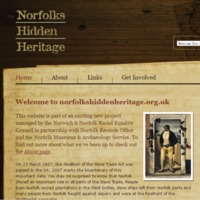
Norfolk's Hidden Heritage
Norfolk’s Hidden Heritage was a partnership project between the Norwich and Norfolk Racial Equality Council (NNREC), the Norfolk Record Office (NRO) and the Norfolk Museums and Archaeology Service (NMAS) which researched the links between Norfolk and transatlantic slavery. For example, many slaving voyages left England from King's Lynn, while the Dalling family of Norfolk owned the Donnington Castle plantation in Jamaica. The exhibition, curated by Norfolk Record Office, won an award for the Best Black History Project for the East of England from the Black History Society. The website provided an interactive timeline to trace Norfolk’s Hidden Heritage from 1670 to today. There was also a database to search for important people, places and dates. Workshops were run in a number of schools, and information packs distributed. More widely, the project worked with the University of East Anglia, Norwich City College, the Prison Service and the Youth Offending Team. As part of the project, Norwich Academy Drama Group put together the production 'Diary of a Son of Africa', about an enslaved African who eventually gained his freedom.
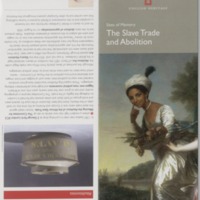
Sites of Memory: The Slave Trade and Abolition
The Sites of Memory project was the first research by English Heritage (now Historic England) to provide an overview for the public of the buildings, memorials and grave sites across England that reflects the role of the slave trade in British history, and resistance to it. The project explored the history of Black people in Britain during the 18th and 19th centuries by exploring the stories behind the historic built environment of local streets, buildings and landmarks. The research (by historians Angelina Osborne and S. I. Martin, on behalf of English Heritage) also identified sites associated with the slave trade and plantation wealth, and with the abolitionists who campaigned for an end to slavery. English Heritage also made recommendations for new listings for historic sites that mark the Black presence.
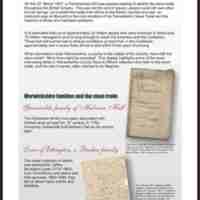
Slavery: A Warwickshire Connection?
An exhibition exploring the connections between Warwickshire and the transatlantic slave trade, using the collections held at Warwickshire Record Office. Several Warwickshire families owned plantations in the Caribbean, such as the Greatheed family of Guy's Cliffe who owned an estate in St Kitts. Vice Admiral Lord Hugh Seymour was prominent in the West Indies as Commander of Britain's naval forces in the Leeward and Windward Islands. Church of England parish registers reveal the presence of black people in Warwickshire's history.
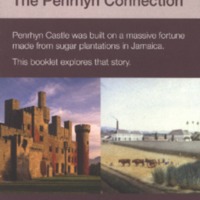
Sugar and Slavery - The Penrhyn Connection
Penrhyn Castle on the outskirts of Bangor in Wales is owned by the National Trust. In 2007, the bicentenary was marked with a special exhibition and accompanying events exploring the connections between the Castle and the fortune of its former owners, the Pennant family, built on Jamaican sugar from one of the largest estates on the island. The exhibition featured the story of Richard Pennant, 1st Lord Penrhyn, a wealthy merchant and MP for Liverpool who fought against abolition in Parliament. Some of the research was carried out by members of the local community, who were trained in archival research by exploring the Penrhyn Jamaica papers held at Bangor University, which included Richard Pennant's letters as absentee landowner.
The project created links between a local school near the Castle, Banks Road school in Liverpool and Mavisville school in Kingston, Jamaica. All three schools provided art, prose and poetry to the exhibition. Workshops were held for all visiting schools. Accompanying events included art days where a local artist worked with visitors to explore the meaning of landscape painting in the context of slavery; a Caribbean weekend; and a day of activities and workshops with a multi-faith groups of teenagers from Liverpool. A DVD of all the information gathered was given free to schools and libraries.
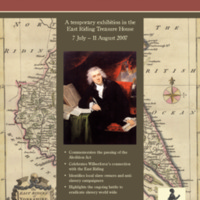
William Wilberforce, Slavery and the East Riding
Alongside commemorating the passing of the 1807 Abolition Act, the ‘William Wilberforce, Slavery and the East Riding’ exhibition at the Treasure House in Beverley also highlighted Wilberforce’s connections with the East Riding of Yorkshire. The exhibition traced the roots of the Wilberforce family back to the early 13th century, and narrated the story of William Wilberforce’s early life in a family of merchants, and later, his significant contributions to the abolition campaign. It also looked at the other links between the East Riding and slavery, in the family fortunes of the Beverley family and Watt family, founded on ownership of slave plantations, but also the anti-slavery societies established in the region. The exhibition ended by highlighting the plight of the millions of people still enslaved across the world today, and discussed some of the contemporary antislavery efforts.
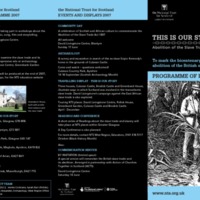
This is Our Story
To mark the bicentenary, the National Trust for Scotland put together a wide-ranging programme of events to engage their audiences with Scottish connections to slavery and abolition. Three National Trust for Scotland properties in the West of Scotland – Culzean Castle, Brodrick Castle and Greenbank House – illustrate the ways in which Scotland was involved in the transatlantic slave trade. A touring exhibition based on this new research was shown at these sites and others in the West of Scotland. The Beckford Collection of furniture, silver and China at Brodrick Castle, on the Isle of Arran, once belonged to William Beckford, owner of several sugar plantations in the West Indies. Scipio Kennedy from ‘Guinea’ lived at Culzean Castle, Ayrshire, from 1710, first as a slave and then as a paid servant. The Allason brothers of Greenbank House were traders in tobacco and slaves. David Livingstone spent much of his life campaigning against the slave trade based in East Africa. His work is remembered at the David Livingstone Centre in Blantyre.
The 2007 Learning Programme involved workshops for local community groups and a resource pack for teachers and youth leaders. Events included a celebration of Scottish and African culture at the David Livingstone Centre; a survey and excavation in search of the ex-slave Scipio Kennedy’s home in the grounds of Culzean Castle; and a Commemoration Service arranged in partnership with Action of Churches Together in Scotland (ACTS).
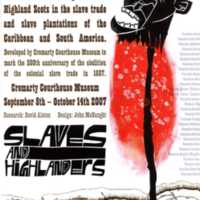
Slaves and Highlanders
An exhibition developed by Cromarty Courthouse Museum in the Scottish Highlands recording the role of Highland Scots in the slave trade and slave plantations of the Caribbean and South America and, in particular, British Guiana. The striking illustrations were by John McNaught. The exhibition told individual stories of Scottish merchants, plantation owners and their slaves, such as a slave called Inverness, bought, sold, exploited and hunted as a runaway by Scots in Demerara. It also looked at the freed slaves who found a place in Scottish society. Connected to this project was the placing of a plaque in the former Royal Northern Infirmary (now the executive office of the University of the Highlands and Islands). It remains one of the few acknowledgements of the use of profits from the slave plantations to fund charitable public institutions, and the only known one in Gaelic.
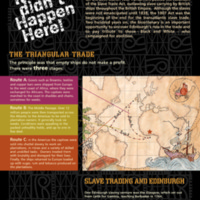
It Didn't Happen Here! Edinburgh's Links in the Trans-Atlantic Slave Trade
This exhibition at the Museum of Edinburgh explored the city's links to the slave trade and, in particular, trading connections with the Americas. Imports to the Port of Leith from North America and the West Indies included tobacco, rum, sugar, cotton, rice and indigo. The exhibition looked at Scots who sought fortunes in the West Indies, as well as Black residents who made their homes in Edinburgh. It also explored Edinburgh's connections to the abolition movement.
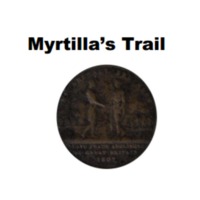
Myrtilla's Trail
Myrtilla’s Trail was developed at Leamington Spa Art Gallery & Museum in partnership with poet Brenda Tai Layton, using objects, images and texts to explore local links with the slave trade. Myrtilla, 'Negro slave to Mr Tho. Beauchamp', is buried in the village of Oxhill in Warwickshire. Apart from her gravestone (dated 1705), she remains anonymous. Warwick District has connections with slave owners, such as the Greatheed family of Guy's Cliffe, sugar plantation owners in St Christopher (St Kitts). This trail around the galleries offered a starting point for exploring these complex and often hidden histories, including busts and documents of the Greatheed family, abolitionist coins, protest songs, and travel posters.
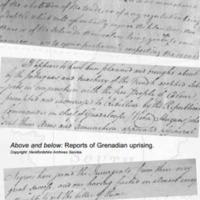
Unfair Trade
A touring exhibition from Herefordshire Museums, which explored Herefordshire's hidden history of slavery. Local connections include Moccas Court near Hereford, the country house once home to the Cornewall family, owners of a sugar plantation on Grenada at the time of the Grenadian uprising of 1795. Another county connection to the history of slavery is Lady Hawkins' School in Kington, the construction of which was bequeathed in 1632 by the widow of Sir John Hawkins, England's first slave trader. The nineteenth-century poet and abolitionist Elizabeth Barrett Browning also had family connections in Herefordshire. The exhibition was taken on tour around Herefordshire and Warwickshire on a specially commissioned Abolition Bus.
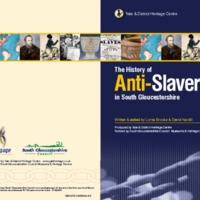
Impact: A history of anti-slavery in South Gloucestershire
This exhibition and booklet were produced as part of South Gloucestershire's Engage 2007 project, in partnership with Yate and District Heritage Centre. Both the exhibition and booklet explored local connections with the history of slavery and anti-slavery in South Gloucestershire. Links identified included the career of Robert Jenkinson of Hawkesbury (later Prime Minister Lord Liverpool), the Caribbean plantations of the Codrington family, the campaign efforts of abolitionist Joseph Sturge and, looking further back in history, St Wulfstan's attempts to abolish the trade in slaves to Ireland in the 11th century. The booklet was written and edited by Lorna Brooks and David Hardill. The exhibition toured the local area, including Thornbury and District Museum, pictured here.
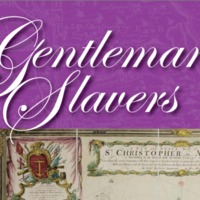
Gentlemen Slavers
Gentlemen Slavers was a project to explore the connections between the transatlantic slave trade and the London Borough of Sutton, particularly through the activities of one family – the Taylors of St Kitts. George Taylor, and later his brother John, lived on the Carshalton Park estate, funded by a family fortune made on slave-worked sugar plantations on the islands of St Kitts and Nevis. The project also looked in detail at the story of Samuel Mudian, a black man who worked at Carshalton Park as a butler for George Taylor, and likely a native of St Kitts. The project consisted of an exhibition, booklet, education pack and activity sheets.
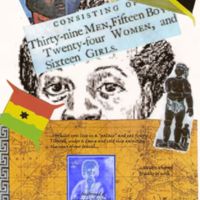
Hidden Stories
A collaborative project between Barnsley Archives and Local Studies, the Cooper Gallery and Cannon Hall exploring local connections to the slave trade. Cannon Hall is the ancestral home of the Spencer Family, who made their fortune in the local iron industry. In the mid-18th century, Benjamin Spencer became involved in the slave trade, and owned a slave ship called ‘Cannon Hall’; in contrast, Walter Spencer-Stanhope, who inherited the hall in 1775, supported the abolitionist movement. Pupils from local primary schools explored the hall’s connections to the slave trade and abolitionism, and produced artwork in response to the hidden histories, some of which were exhibited in the Cooper Gallery’s exhibition, ‘Witness’.
The ‘Hidden Stories’ project also explored the Crossley Family archive held by Barnsley Archives and Local Studies (Benjamin Crossley owned a sugar plantation in Jamaica). Barnsley Archives worked with the Barnsley Black and Ethnic Minority Initiative on a project to encourage black and minority ethnic groups in the Barnsley area to discover more about their roots. Other partners included Barnsley Out of School Study Support Network, Foulstone City Learning Centre and Just Addictive Music.
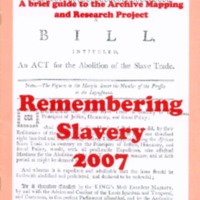
Remembering Slavery Archive and Mapping Project
Remembering Slavery 2007 involved museums, galleries and other cultural organisations across the North East of England in a programme of exhibitions, events, performances, lectures and activities to explore the themes of slavery and abolition, and identify connections with the region.
The Remembering Slavery Archive Mapping and Research Project, led by the Literary and Philosophical Society in Newcastle and assisted by local history groups, uncovered a large amount of archival material in the region’s institutions, exposing many hitherto unknown links between the North East and the slave trade. The participating record offices and libraries were Tyne and Wear Archives Service, the Literary and Philosophical Society Library, the Northumberland Record Office and the Robinson Library’s Special Collections at the University of Newcastle upon Tyne. This reassessment of the North East’s involvement in slavery and the slave trade led to new published research, including John Charlton's 'Hidden Chains: the Slavery Business and North East of England 1600-1865'. There was also a lecture programme at the Literary and Philosophical Society, including talks by Professor James Walvin. Several of the project volunteers published essays based on their research in 'North East History 39' (North East Labour History Society, 2008). The North East Slavery and Abolition Group was established among the project volunteers, and further work on slavery and abolition was included in the Society’s North East Popular Politics project (NEPPP), 2010-13. Much of the material found in the 2007 project has been loaded onto the NEPPP database.
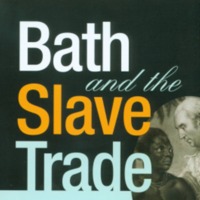
Bath and the Slave Trade
Bath Preservation Trust curated a series of exhibitions across five of their sites, with a focus on ‘unlocking the legacies of the slave trade'. Beckford’s Tower & Museum hosted Big Spenders: The Beckfords and Slavery; displays here and at the Holburne Museum were designed to explore the Beckford family connections to plantations in Jamaica, through objects, paintings and furniture. The Herschel Museum's Slaves to Fashion exhibition, and Number 1 Royal Crescent's Elegance and Exploitation trail looked at how involvement with the slave trade enhanced the luxury of 18th century life in Bath. At the Building of Bath Museum, Selina’s Web revealed the complex attitudes of Selina, Countess of Huntingdon, who sought to promote the publications of free slaves whilst also being a slave owner. A lecture series ran alongside these exhibitions.
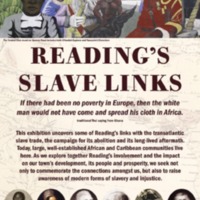
Reading's Slave Links
This exhibition from Reading International Solidarity Centre (RISC) in collaboration with local communities uncovered Reading’s links with the slave trade, the campaign for its abolition and its aftermath. Exploring Reading’s involvement in historical slavery and the impact on the town’s development, the exhibition focused on, for example, wealthy families in the area, the role of the Royal Berkshires in Caribbean colonies, and the story of Mary Smart, the earliest known Sierra Leonean resident in Reading. The project also sought to raise awareness of modern forms of slavery and injustice. It included workshops, a conference, and a quiz.